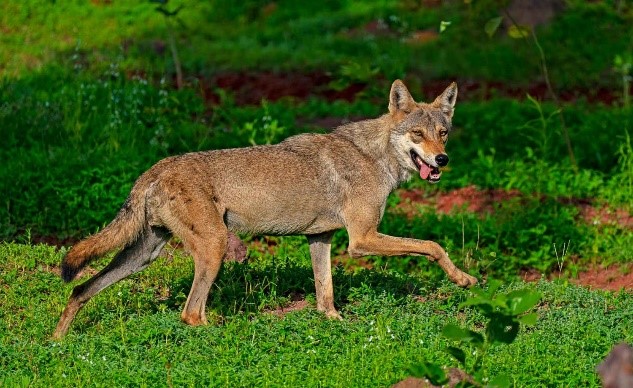Description

Disclaimer: Copyright infringement not intended.
Context
- The recent sighting of an endangered Indian grey wolf in the National Chambal Sanctuary, Etawah has captured the attention of wildlife enthusiasts.
Indian Grey Wolf
About
- The Indian grey wolf (Canis lupus pallipes) is a subspecies of the grey wolf (Canis lupus) native to the Indian subcontinent. Here's an overview of the Indian grey wolf:
Distribution:
- The Indian grey wolf is primarily found in the arid and semi-arid regions of India.
- Its range includes states like Rajasthan, Gujarat, Haryana, Madhya Pradesh, and parts of Maharashtra.
Habitat:
- The wolf inhabits a variety of ecosystems, including grasslands, scrublands, and deserts.
- They are known for their adaptability to different environmental conditions.
Physical Characteristics:
- The Indian grey wolf is typically smaller in size compared to some other wolf subspecies.
- It has a greyish-brown fur coat with a mix of lighter and darker shades.
Behavior and Social Structure:
- Indian grey wolves are known for their social nature and often live in packs.
- Packs are usually family units, consisting of a breeding pair and their offspring.
- They are skilled hunters, preying on small to medium-sized ungulates and sometimes scavenging.
Conservation Status:
- The Indian grey wolf is listed as "Endangered" on the International Union for Conservation of Nature (IUCN) Red List.
- Threats to their population include habitat loss, human-wildlife conflict, and poaching.

National Chambal Sanctuary
Location:
- The National Chambal Sanctuary is situated in the Etawah district of Uttar Pradesh, India, along the Chambal River.
Establishment and Purpose:
- Founded in 1979, the sanctuary was established with the primary goal of safeguarding the critically endangered Gharial, a unique crocodile species, and other aquatic fauna.
Biodiversity:
- Renowned for its diverse aquatic life, the sanctuary is a habitat for the Gharial, Gangetic dolphin, various turtles, and fish.
- It also serves as a significant area for birdwatching, hosting a variety of resident and migratory bird species.
Conservation Initiatives:
- Conservation efforts within the sanctuary focus on protecting habitats, monitoring wildlife populations, and engaging in community-based initiatives.
|
PRACTICE QUESTION
Q. Which of the following best describes the habitat adaptability of the Indian Grey Wolf?
A. It thrives exclusively in dense forests.
B. It primarily inhabits coastal regions.
C. It shows adaptability to arid and semi-arid regions.
D. It prefers high-altitude mountainous areas.
Answer C.
|












